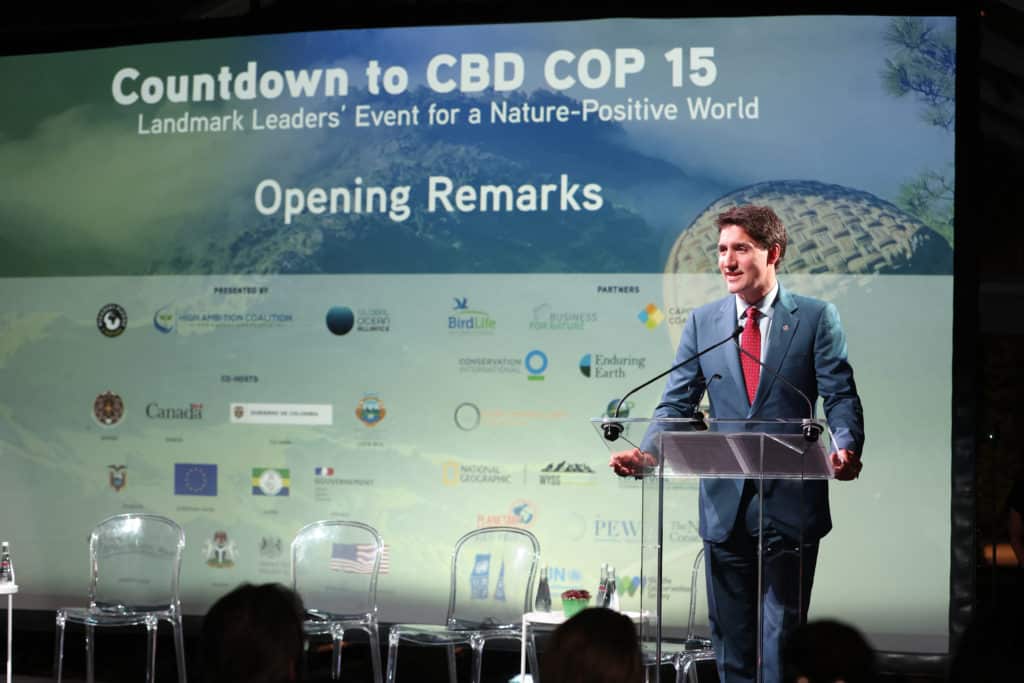On Wednesday, 195 countries will gather in Montreal, Canada, for COP15, the UN’s biodiversity summit to halt ecological destruction and biodiversity loss. Governments are expected to agree on a new set of goals, reaching a deal similar to the 2015 Paris Agreement. Read on to learn what COP15 is and what we can expect from it.
—
What Is COP15
The 15th meeting of the Conference of the Parties to the Convention on Biological Diversity, otherwise known as COP15, is a once-in-a-decade opportunity to secure a global action plan to halt and reverse biodiversity loss by the end of the current decade.
The conference’s presidency is held by China and was meant to take place in the Chinese city of Kunming two years ago, but ended up being postponed in light of the COVID-19 pandemic and will now take place in Montreal, Canada, as Beijing continues to grapple with the Covid-19 pandemic. Chinese President Xi Jinping is not expected to attend the conference.
Just weeks after the controversial COP27 summit, which ended with a historic pact on loss and damage but also a disappointing final agreement that lacks any mention of fossil fuel phase-down, environmentalists worldwide are now shifting their attention to the upcoming UN green summit.
The hosting city is preparing to welcome representatives and negotiators from 195 countries as well as about 1,400 organisations – including NGOs and businesses from 103 countries. This year’s theme – ‘Ecological Civilization: Building a Shared Future for All Life on Earth’ – reinforces the vision of “Ecological Civilization”, “drawing from traditional to new eco-based innovations, to inspire sustainability pathways for the future.”
The Current State of Biodiversity
The conference comes at a crucial time in history. Biodiversity loss is happening at the fastest pace ever recorded, making boosting conservation and ecosystem management pivotal to safeguarding our planet and humans, whose lives and survival depend on it. Indeed, biodiversity not only helps regulate weather patterns, but it also plays a crucial role in providing pollination and pest control and absorbing carbon emissions from the atmosphere, ultimately slowing down climate change. With this in mind, it is easy to understand why losing it would pose a critical challenge to the world.
“The climate crisis is one of the main drivers of biodiversity decline and scientists say we will be unable to reach climate targets without addressing the biodiversity crisis,” says Nicola Stopps, corporate sustainability expert and founder of Simply Sustainable, a global sustainability consultancy.
“COP15 is likely our last chance to conserve the natural world and our existence as we know it.”
A grim report published by the World Wildlife Fund (WWF) earlier this year found that the world has lost about 69% of its wildlife population in the past 50 years. The study also suggests that freshwater species have also been “disproportionately impacted”, plummeting 83% on average in only half a century. Among the species most threatened by overfishing are pink river dolphins and harlequin frogs.
The degradation of ecosystems and loss of species have become so alarming that in 2017, scientists referred to the situation as a “biological annihilation”, with many warning that the Earth is entering its sixth mass extinction event.
No single factor is to blame for the unprecedented decline in wildlife populations. Rather, scientists point the finger at human activities such as pollution, overfishing, deforestation, and habitat loss as a consequence of land exploitation for farming and agricultural activities. Global warming also represents a huge threat to habitats and ecosystems worldwide.
“Nature is a linchpin in our fight against climate change”, Tanya Steele, the head of the WWF’s UK office, told BBC in an interview. “We do need to ensure that we have more nature on our planet rather than less if we are to limit global temperature rises to 1.5C in the future.”
You might also like: Reversing Biodiversity Loss by 2030 Is ‘Unrealistic’, Conservationists Say Ahead of COP15
What Can We Expect From COP15?
Over the next two weeks, negotiators are tasked with discussing and ultimately finalising a new global biodiversity agreement to halt and reverse the loss of plant and animal species and damage to ecosystems worldwide – including oceans and forests. This requires them to set both long-term nature-protection targets for 2050 as well as shorter-term goals for 2030.
According to a draft agreement published earlier this year, the summit’s goal is to set a landmark agreement to coordinate countries on meaningful steps needed to “halt and reverse biodiversity loss” and “put nature on a path to recovery”, with a concrete target to protect 30% of land and sea by 2030 (also known as the 30×30 proposal). The draft is also built on the goal of having people live “in harmony with nature and Mother Earth” by 2050.
Besides that, COP15 will also offer a platform to discuss other crucial topics, including the rights of Indigenous and local communities as well as the phase down or reallocation of US$500 billion worth of nature-harming subsidies.
The deal is expected to be similar to the landmark Paris Agreement, the world’s first comprehensive climate agreement adopted in 2015 by almost every nation on Earth that promotes a global consensus on addressing the climate crisis.
While governments’ action is key in halting and reversing biodiversity loss, businesses must also step up their game.
“Biodiversity fundamentally underpins the benefits that businesses derive from natural capital and supports the key ecosystem functions that ensure the delivery of business operations and productivity [and] it is therefore essential that business leaders assess and understand the value that natural resources and biodiversity hold for their operations and supply chains,” says Stopps.
“Once they do, they can prioritise action that mitigates their impact on biodiversity loss and foster positive outcomes for nature. This will create a symbiotic relationship between business and nature, where both can thrive.”
Featured image by Monica Schipper/Getty Images for WWF International
You might also like: The Remarkable Benefits of Biodiversity


















